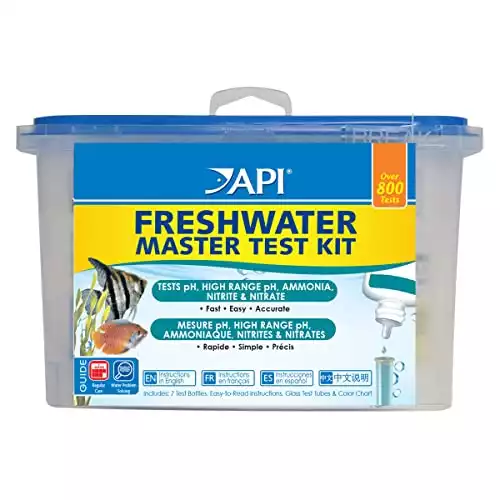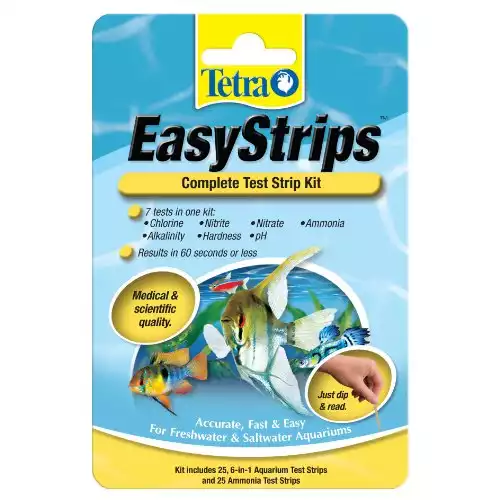
If you have an established cycled aquarium but have no fish to keep in it, and you want to know how long can beneficial bacteria survive without fish, you’re in the right place.
I wanted to know this too, so I Googled it and ended up more confused as the answers on forums etc, vary wildly from; beneficial bacteria will start to die off after a few hours, to; it can survive for months or even years! 🤯
You’re always learning in this hobby, no matter how long you’ve been at it.
I’ll go over what I found when researching the subject, but from what I can see there is no definitive answer out there! I’ll share my methods of how I ensure the beneficial bacteria stay alive indefinitely.
Let’s dive straight in.
How Long Can Beneficial Bacteria Survive Without Fish?
Exactly how long beneficial bacteria can survive without fish varies from aquarium to aquarium as each one is its own ecosystem.
Beneficial bacteria need ammonia, which typically comes from fish poop, rotting food, and dead plant matter.
The question asked should actually be: How Long Can Beneficial Bacteria Survive Without Ammonia?
The Journal of Biochemistry studied this topic back in 1998 and found that beneficial bacteria can survive for at least 342 days without ammonia.
So, if you’re not going to have fish in your tank for a short period, your bacteria colony will be just fine, they’re not going to starve to death overnight.
Things that will kill your beneficial bacteria are being exposed to high and low temperatures and chlorine.
How To Keep Beneficial Bacteria Alive Without Fish
Keeping beneficial bacteria alive without fish present isn’t actually that hard and these are the methods I use.
Although the study above shows it could survive by itself for quite a long time, I prefer to err on the side of caution and provide a constant food source to be certain it will stay alive.
Most of the bacteria live inside your filter as there’s a constant source of nutrient-rich water flowing through it.
You can provide an ammonia source by either adding small amounts of fish food (and allowing it to decay, thus releasing ammonia) or dosing your tank with Fritz Aquatics Fishless Fuel.
One thing to note with the Fritz Fishless Fuel, the dosage instructions on the label are a little off.
I’ve cycled a new tank using this stuff and found and found I only needed to use 2 drops per gallon of water, which is 1/2 of the dosage stated on the label.
Maintain Cleanliness
You still need to keep your tank clean when you aim to maintain a cycled tank without fish.
Regularly remove waste from the bottom of the tank and check ammonia and nitrite levels with a test kit or strips so you don’t overwhelm your bacteria colony and screw up your nitrogen cycle.
4.7 | 4.5 |
The API freshwater test kit offers outstanding value (over 800 tests!) and is very accurate, if you're serious about fishkeeping this is the best test kit to buy and the only one I use. | The Tetra test strips are quick & easy to use and measure all the vital water parameters that you need to monitor to keep your fish safe, but it can be difficult to read the colors, making them less accurate than the API water test kit. |
$13.49 | |
The API freshwater test kit offers outstanding value (over 800 tests!) and is very accurate, if you're serious about fishkeeping this is the best test kit to buy and the only one I use.
The Tetra test strips are quick & easy to use and measure all the vital water parameters that you need to monitor to keep your fish safe, but it can be difficult to read the colors, making them less accurate than the API water test kit.
Keeping A Filter Cycled Without A Fish Tank
In situations where you have to remove the filter from your tank, such as moving home, you can ensure you keep your beneficial bacteria alive using the bucket method.
First, you will need a bucket or tub of water, preferably from your tank.
You could use tap water, just be sure to treat it with a water dechlorinator first so it doesn’t kill off the bacteria you want to keep alive.
Make sure both the intake and outlets are in the water, and start the filter running.
If you have a canister filter, place the bucket on an elevated surface, such as a chair or a table, and position your canister filter below the bucket.
Add Fritz Aquatics Fishless Fuel or fish food to the water and regularly check the ammonia and nitrite levels.
You can then add the filter back to your fish tank when you’re ready and you’ll still have your bacteria colony intact.
Closing Thoughts On How Long Can Nitrifying Bacteria Survive Without Ammonia
Keeping an empty tank cycled without fish is possible with a few simple steps.
Keep the water temperature stable, provide a steady source of ammonia for them to feed off, test your water ammonia levels, and keep up with your tank maintenance.
These are the methods I have used with success, however, there are a ton of differing opinions out there, as I found when researching the topic!
I’ve read that people have taken out a sponge filter and left it to dry out for months, put it into their new tank, and the tank has cycled instantly, meaning the beneficial bacteria came back to life, there is some debate as to whether it dies off or goes dormant.
Check out the aquarium health section for more guides and tips on how to keep your aquarium healthy.



